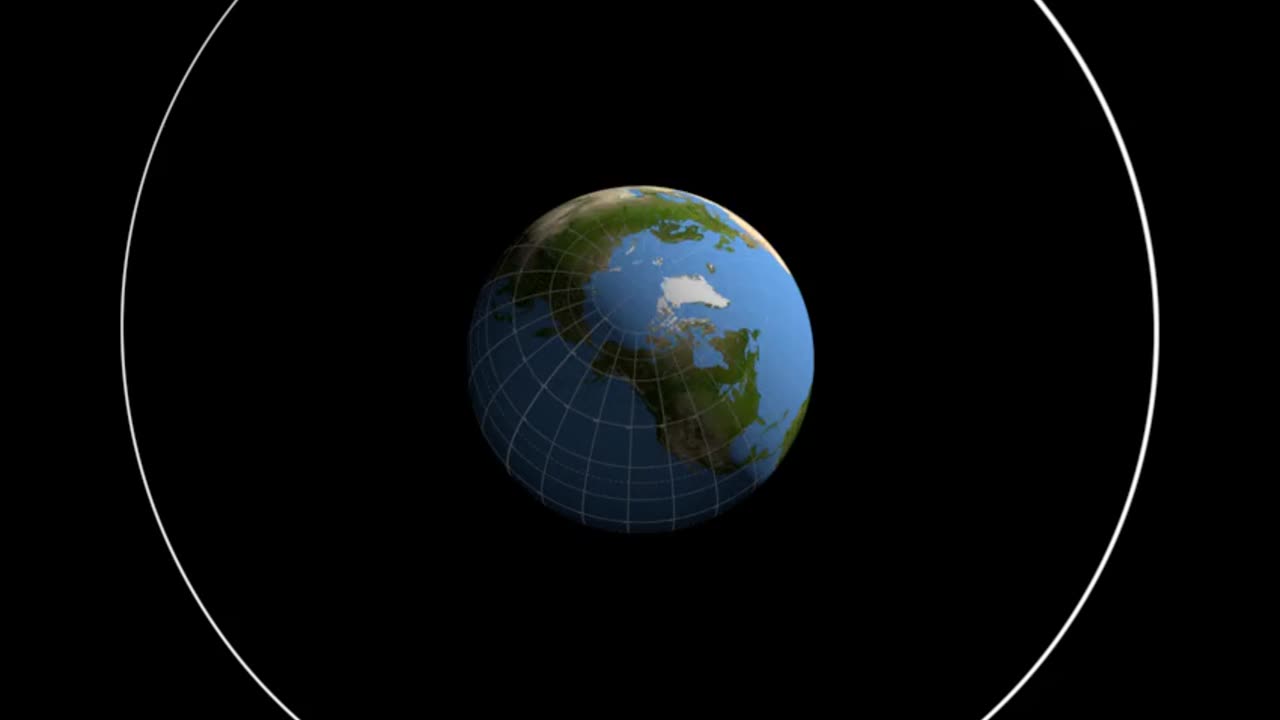Premium Only Content

The Moon's Orbit
The Moon's orbit is the elliptical path that the Moon follows as it revolves around the Earth. This orbit plays a crucial role in shaping the lunar phases and the way we observe the Moon from Earth. Here is a description of the Moon's orbit:
Elliptical Shape: The Moon's orbit is not a perfect circle but rather an ellipse. This means that the distance between the Moon and Earth varies throughout its orbit. At its closest point (perigee), the Moon is approximately 225,623 miles (363,104 kilometers) away from Earth, while at its farthest point (apogee), it can be about 251,970 miles (405,500 kilometers) away.
Synchronous Rotation: The Moon is in synchronous rotation with Earth, which means it always shows the same face (the near side) towards our planet. This phenomenon is known as "tidal locking" and is a result of the gravitational forces between the Earth and the Moon.
Phases of the Moon: The varying position of the Moon in its elliptical orbit causes us to observe different phases of the Moon from Earth. These phases include the New Moon, First Quarter, Full Moon, and Last Quarter, as well as the waxing and waning crescents and gibbous phases in between. These phases are a result of the changing angle between the Earth, Moon, and Sun.
Lunar Cycle: The time it takes for the Moon to complete one orbit around Earth is approximately 27.3 days, which is slightly longer than its 29.5-day synodic month (the time it takes to go through all the lunar phases). This discrepancy is due to Earth's orbital motion around the Sun, causing the Moon to have to "catch up" to return to the same phase as observed from Earth.
Gravitational Influence: The Moon's orbit is influenced primarily by the gravitational attraction between the Earth and the Moon. This gravitational interaction causes tides on Earth and has a stabilizing effect on Earth's axial tilt, which is important for maintaining stable seasons on our planet.
Analemma: If you were to track the Moon's position in the sky at the same time each day for a year, you would create a figure-eight-shaped pattern known as an "analemma." This pattern results from the combination of the Moon's elliptical orbit and Earth's axial tilt.
Perturbations: While the Moon's orbit is relatively stable over short time scales, it is subject to long-term changes known as perturbations. These perturbations are caused by the gravitational influences of the Sun and other celestial bodies and can gradually alter the shape and orientation of the Moon's orbit over thousands to millions of years.
In summary, the Moon's orbit is an elliptical path that the Moon traces around Earth, influencing the lunar phases, tides, and Earth's axial stability. It is a fascinating celestial phenomenon that has captivated humanity's attention for centuries.
-
 LIVE
LIVE
Meisters of Madness
3 hours agoThymeSia - Power of the Plague
49 watching -
 1:13:25
1:13:25
Kim Iversen
6 hours agoAmerica First? Then Why Are We Funding This? | Empathy Is the Left’s Weapon—Here’s Why It’s Dangerous
98.1K94 -
 1:24:11
1:24:11
vivafrei
7 hours agoCanadian Elections! Trump Tariffs! Panicans and Hysterics! And Jena Griswold for AG of Colorado?
101K59 -
 1:35:31
1:35:31
2 MIKES LIVE
6 hours ago2 MIKES LIVE #202 Deep Dive Monday!
20K -
 55:41
55:41
BIG NEM
2 hours agoQuit or Keep Going? A Real Talk for Creatives
16.5K2 -
 DVR
DVR
Quite Frankly
7 hours ago"Cringefest Protests, Trade War, 'Built Different'" ft. Brenden Dilley 4/7/25
20K6 -
 1:30:45
1:30:45
Redacted News
5 hours agoBOMBSHELL TRUMP TARIFFS CAUSE LIBERAL MEDIA MELTDOWN AS MARKET SELLOFF GRIPS WALL STREET | Redacted
157K210 -
 2:23:12
2:23:12
The Quartering
9 hours agoTrump's Tariffs Are WORKING, RFK Betrayal, Ben Shapiro Vs Trump & Tesla Protesters EXPOSED!
223K120 -
 44:28
44:28
Kimberly Guilfoyle
7 hours agoThe Truth About Tariffs, Plus the De-Banking Battle, Live with Jeremy Tedesco & Elaine Dezenski | Ep211
64K24 -
 9:08:36
9:08:36
LFA TV
1 day agoLFA TV - ALL DAY LIVE STREAM 4/7/25
143K38